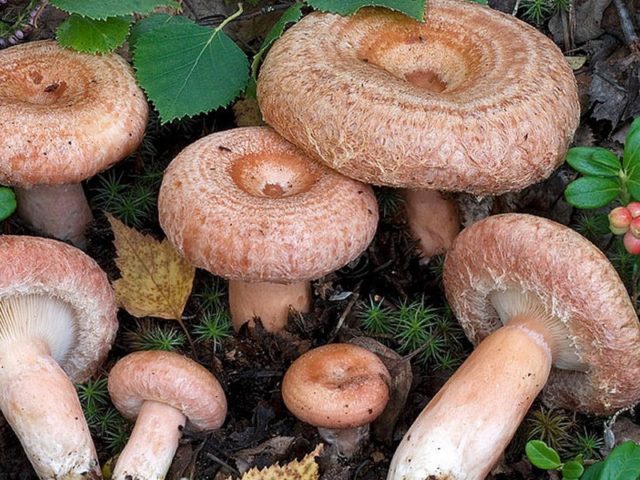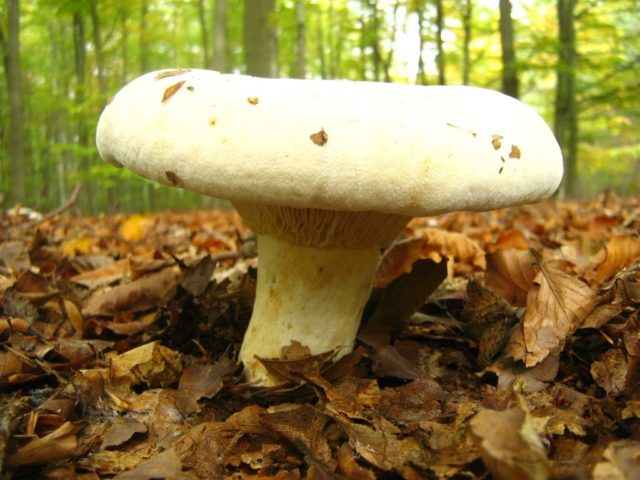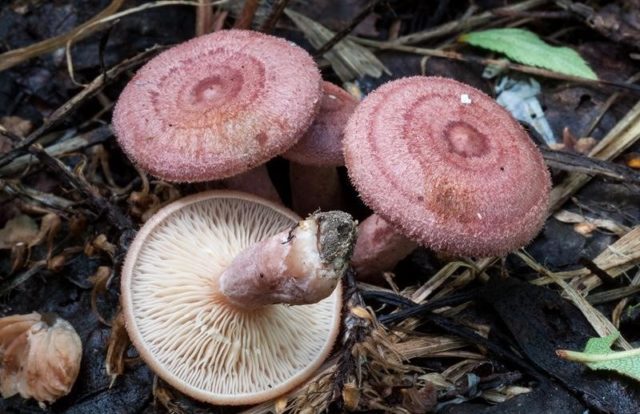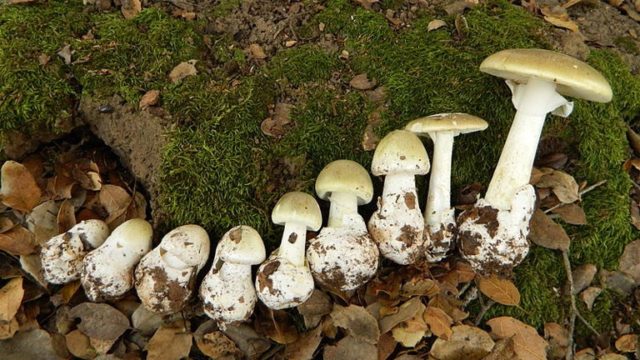Content
Volnushki are mushrooms of the Millechniki genus, the Russula family. They belong to the category of conditionally edible mushrooms that can be eaten after careful and competent processing. Experienced mushroom pickers consider them a delicacy: when cooked correctly, they acquire an exquisite taste. They are especially good in salted and pickled form.
For those who are just beginning to get acquainted with the intricacies of "quiet hunting", it is important not to make a mistake and not bring a poisonous mushroom from the forest. Many of them have "doubles", they are also present in this type of milkmen. False wave mushrooms - are they edible or poisonous, how to recognize them - more on that later.
Are there false waves
There are two types of waves - white and pink. Newbies often confuse them with other members of the Millechnik family. They also grow in birch or mixed with birch forests, preferring places with high humidity.
What mushrooms are called "false flowers"
False flowers are called various types of milkers, which have an external resemblance to real waves. They differ in size, color of the cap, the degree of its pubescence, the severity of concentric circles on it. False wave mushrooms also grow in wetlands and deciduous forests. It is not uncommon for true and similar varieties to appear side by side, which increases the possibility of errors.
What mushrooms look like waves
Volnushki are often confused not only with milkmen, but also with other members of the russula family - mushrooms, milk mushrooms. Most of them are edible, but inedible mushrooms are also found among them. Below are photos and descriptions of false waves, as well as mushrooms similar to them.
Edible mushrooms that look like a wave
These waves have a complex of characteristic external signs that make it easy to recognize them among similar mushrooms. However, inexperienced lovers of quiet hunting often make mistakes when collecting. Photos and descriptions of mushrooms that look like waves will help avoid this.
Faint or limp milky (Lactarius vietus)
A fragile mushroom, outwardly similar to a wave, only gray in color. The cap is funnel-shaped, thin-fleshy, 3-8 cm in diameter, light gray with a lilac tint. The leg of the false mushroom is the same color as the cap, even, up to 8 cm high, 2 cm wide. The white fragile pulp has a strong pungent taste. Milky sap turns green as it dries.
Gray Miller (Lactarius flexuosus)
This species is also known as serushka. The cap is convex or convex-outstretched, with wavy, curved edges. It is colored brownish or pinkish-gray, with faint annular zones on the surface. The plates are sparse, thick, cream or light yellow, descending along the cylindrical stem. The pulp is white, with a pronounced aroma. Milky sap is white, the color remains unchanged in air.
Lilac Miller (Lactarius lilacinus)
Grows in deciduous forests, mainly under alders. It has a rounded cap with a depression in the middle and thin drooping edges.Its diameter does not exceed 8 cm. The skin of the cap is dry, dull, with a light edging, pinkish-lilac in color, without concentric rings. The plates are thin, adherent, lilac-yellow. The pulp is white or pale pink, fragile, without a pronounced taste or smell. It grows only in September. Milky sap is white, pungent, does not change its properties upon contact with air.
Aspen Milk (Lactarius controversus)
A typical representative of the russula family. Fruit bodies grow large, the cap can reach 30 cm in diameter. It has a funnel-shaped shape and curved fluffy or even edges. The surface of the cap is milky, sometimes with pink spots, becomes sticky after rain. May turn light orange with age. The leg is dense, cylindrical, the same color as the cap. Grows next to poplar and aspen.
Violinist (Lactarius vellereus)
The mushroom has a dense fleshy cap 8-25 cm in diameter with curved or open wavy edges. The skin is covered with a short hair, most often it has a white color, but can acquire a yellow or reddish tint. The pulp is white, firm, brittle with a pleasant aroma and pungent taste.
Yellow Milk (Lactarius scrobiculatus)
It looks like a yellow mushroom called podskrebysh or volvukha. The official name is yellow milk mushroom. The cap is bright or dirty yellow, outstretched, funnel-shaped depressed in the center, with the edge turned down. Its surface can be sticky, woolly or smooth, with concentric zones. The leg is short, thick, with brown spots. The pulp and milky juice of this false wave is white, but turns yellow on the cut.
Gingerbread (Lactarius deliciosus)
Mushrooms, similar to a wave, only red ones are the most delicious representatives of the Millechniki genus. The color of saffron milk caps can be yellow, red-brown, reddish or orange. The shiny, smooth, slightly damp cap has concentric circles. The pulp has a pleasant taste and light fruity aroma; it becomes greenish-blue on the cut. Milky sap is colored in various shades of red. Ryzhiks do not need to be soaked before cooking, as they have a pleasant taste.
Inedible and poisonous mushrooms that look like a wave
Among the false waves, there are also inedible mushrooms. They are not poisonous, but due to their low taste and a pungent pulp smell that does not disappear even after soaking, they are not eaten. None of the mushrooms that look like waves are poisonous. Photos of inedible false wave mushrooms will help you avoid mistakes during collection.
Thorny milky (Lactarius spinosulus)
This mushroom is rare and grows in August-October. The cap is flat-convex, with a small depression in the middle. Its surface is matte, dry, scaly, red-pink in color with dark annular zones. The plates are thin, yellow at first, later yellowish. The leg is round, hollow inside, dry, smooth. The pulp is lilac, brittle, thin. White milky juice, in contact with air, turns green.
Sticky milky (Lactarius blennius)
The mushroom got its name due to the sticky surface of the cap. It has a slightly pubescent edge bent downwards. The color of the fruiting body varies from grayish to dirty green. Concentric rings are distinguished on the skin. The leg is slightly lighter than the cap and also has a sticky surface. In young specimens, it is completed; with age, it becomes hollow. The white brittle flesh has a sharp peppery taste, turning gray when cut. Milky sap is white, turning olive green when dried.
Liver Miller (Lactarius hepaticus)
In pine forests, there is a mushroom that looks like a volushka, only brown in color - hepatic milkweed. It has a smooth, brown-olive-colored bonnet. The plates are thin, frequent, pinkish or brownish.The leg is straight, the same color as the cap or slightly lighter. Liver miller is characterized by brittle, extremely pungent, creamy or brown flesh.
How to distinguish volnushki from other mushrooms
In order to distinguish a real mushroom from twins, you need to know the characteristic signs, thanks to which they cannot be confused.
The rose flower has:
- convex at first, and later flat with a depression and a downward-turned edge of the cap;
- coarse thick hairs on the cap are arranged in concentric circles;
- the surface of the leg is covered with fluff;
- the skin is slightly slimy, darkens from touch.
The white variety differs from the pink one in its smaller size. Its distinctive features:
- cap densely pubescent, concentric rings absent;
- the leg can have a smooth or slightly fleecy surface;
A trait that unites both types of real waves: white pulp and milky juice do not change color upon contact with air. The above photos and descriptions will tell you how to distinguish false waves from real ones.
How to distinguish a toadstool from a toadstool
Pale toadstool is a very toxic mushroom. Eating it in food is fatal, so it is very important to be able to accurately recognize it. Typical external signs of a toadstool:
- the cap of the toadstool has a bell-shaped or flat shape;
- the plates under the cap are white, sometimes with a greenish tint;
- the leg of the toadstool is thin and long;
- the leg of the pale toadstool grows from a volva - a special formation at the root, similar to an egg;
- under the cap of the poisonous mushroom there is a ring - a kind of "skirt", but over time it can collapse and disappear;
- the toadstool is completely absent from the forest, mushroom smell;
- toadstool does not darken when broken;
- the fruit body of the toadstool is not damaged by parasitic insects.
Neither true representatives of the species nor false ones possess these features.
Conclusion
False wave mushrooms are divided into edible and inedible. With skillful preparation, all of them can be eaten without fear of getting food poisoning. Going to the forest, you need to follow the golden rule of mushroom pickers: if you are not sure about the edibility of the mushroom, it is better to throw it away. If it seems that the mushroom looks like a wave, but upon closer examination it can be seen that it is tubular, we can say for sure that it does not belong to either false or real waves, and also does not belong to the russula family and the genus Millechniki.
























